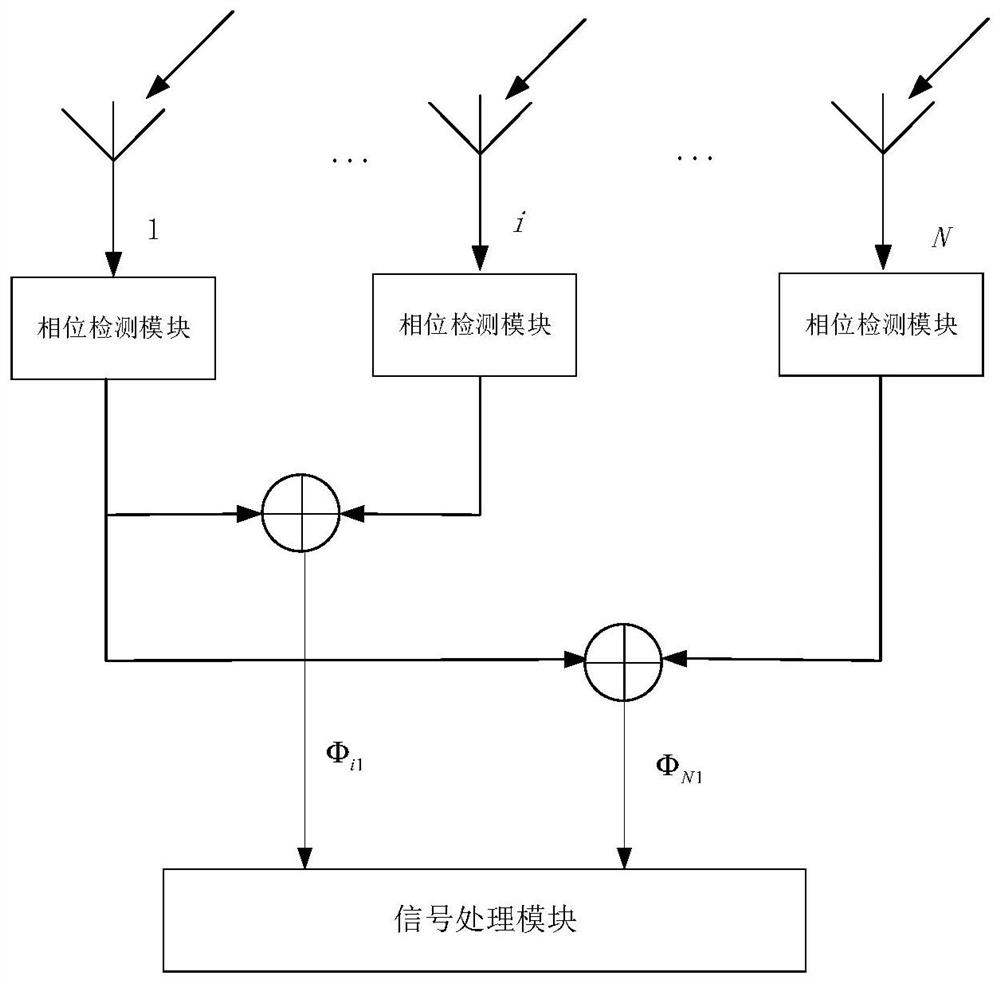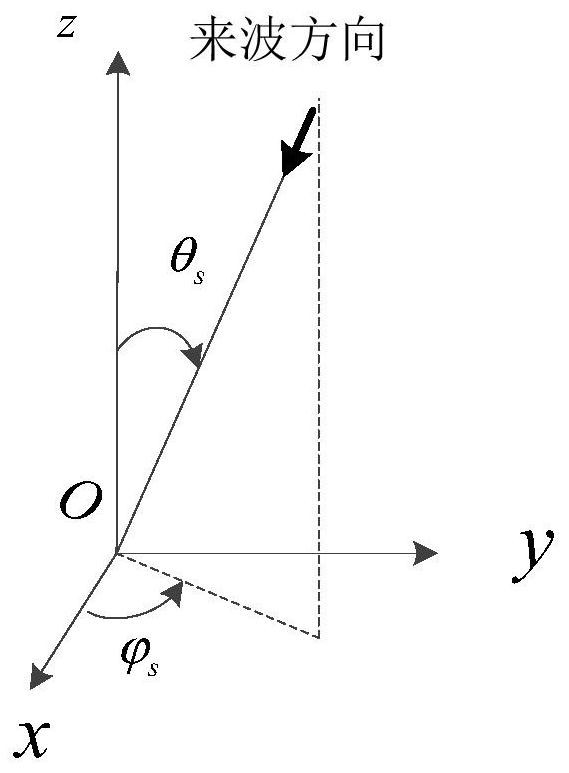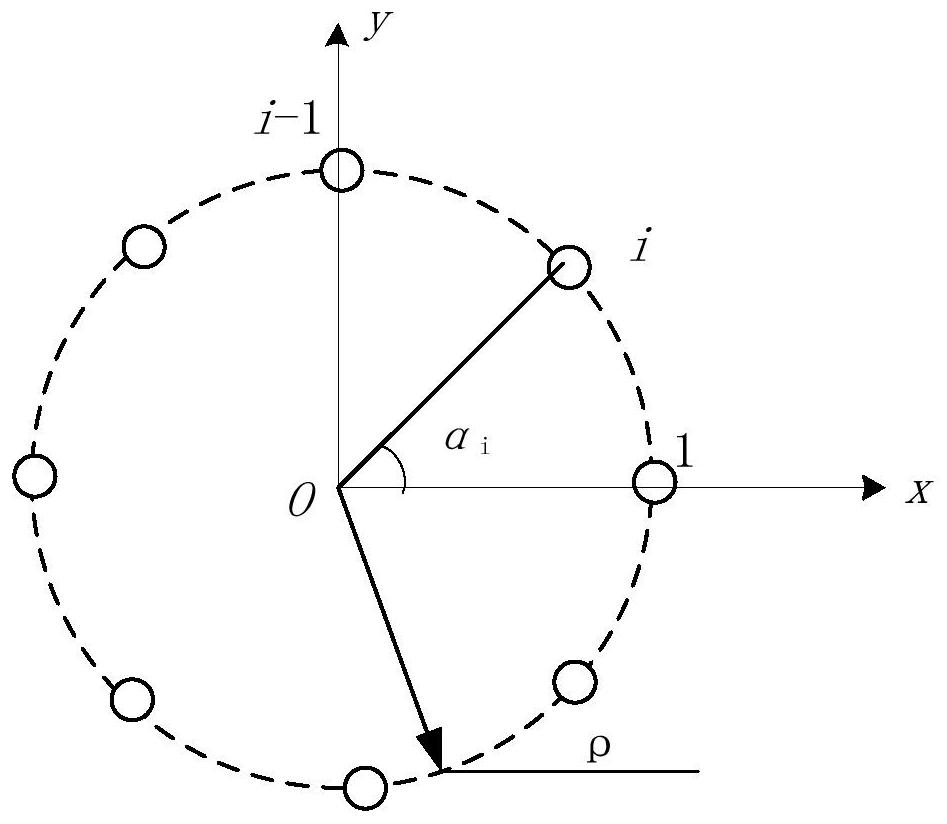Radio frequency direction finding method and system
A radio frequency and vector technology, applied in the field of radio frequency direction finding methods and systems, can solve problems such as insufficient utilization of hardware resources, insufficient application of antennas, complex calculations, etc., avoid logical judgment and other operations, avoid phase ambiguity problems, and have high precision Effect
- Summary
- Abstract
- Description
- Claims
- Application Information
AI Technical Summary
Problems solved by technology
Method used
Image
Examples
Embodiment Construction
[0055] The present invention will be further described below in conjunction with the accompanying drawings. The invention provides a simple and high-precision two-dimensional incident angle measurement method and system. The advantage of this method lies in the use of complex operations, thereby avoiding the phase ambiguity problem; the use of the information of all antennas on the circular array improves the accuracy of direction finding; the use of iterative algorithms avoids operations such as logical judgment; figure 1 The main function of the radio frequency receiving system shown is to convert the extracted space electromagnetic waves into phases reaching different antennas. The direction finding system used can be, but not limited to figure 1 form. N in the figure is the number of antennas, and a phase detector is used for phase detection to obtain the phase difference between each antenna and one of the antennas. Without loss of generality, each antenna performs phas...
PUM
 Login to View More
Login to View More Abstract
Description
Claims
Application Information
 Login to View More
Login to View More - R&D
- Intellectual Property
- Life Sciences
- Materials
- Tech Scout
- Unparalleled Data Quality
- Higher Quality Content
- 60% Fewer Hallucinations
Browse by: Latest US Patents, China's latest patents, Technical Efficacy Thesaurus, Application Domain, Technology Topic, Popular Technical Reports.
© 2025 PatSnap. All rights reserved.Legal|Privacy policy|Modern Slavery Act Transparency Statement|Sitemap|About US| Contact US: help@patsnap.com



